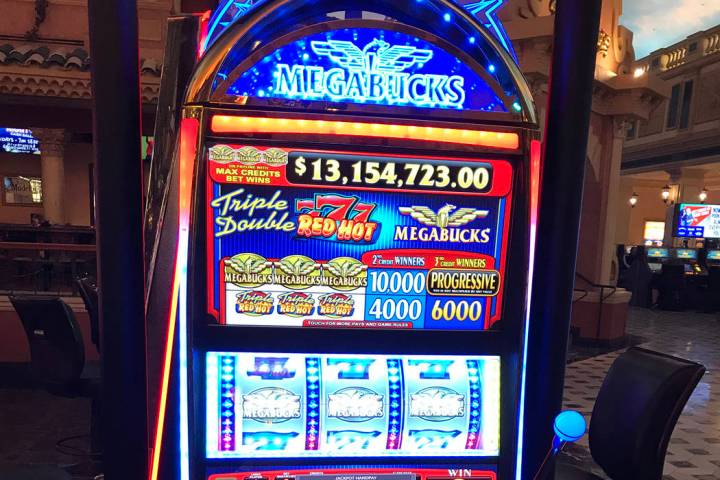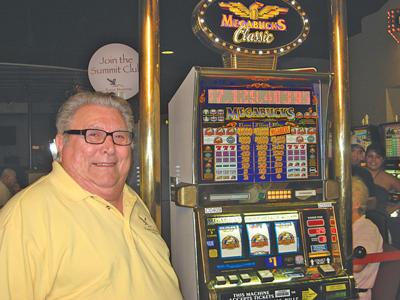

Megabucks is one of the easiest slots to play – all you have to do is put money in the machine and press on the “spin” button. Because the slot itself doesn’t have additional gameplay features (such as free spins or symbols with multiple functions) and only a single pay line, the Mega Bucks. Megabucks Slots is a brand of linked progressive jackpot slot machines designed and distributed by International Game Technology. These games have a deceptively simple set-up. It is a 3-reel, $1-per.
For the uninitiated, Megabucks is a network of linked progressive slot machines whose top prize starts at $10 million and continues to grow until someone gets lucky and lines up the three Megabucks.
- Appendices
- Slots Analysis
- Miscellaneous
Introduction
This page investigates the odds of the progressive jackpot slot machine, Megabucks, including the average jackpot and breakeven point.
For now, let's ignore the fact that a jackpot is paid by installments over 25 years and that the jackpot would be subject to income tax.
I don't know exactly how Megabucks is programmed. However, there is some information that is public knowledge. If we fit the pieces together, we can make a pretty good estimate of the point at which the return is 100%, known as the 'breakeven point.' Here is what we do know:

- According to John Robison, the probability of hitting the jackpot is 1 in 49,836,032. This figure comes from an article titled Megabucks closes in on record jackpot from the Las Vegas Sun, Dec. 24, 1999. That probability comes to (1/368)3, implying each reel has a 1 in 368 chance of stopping on the jackpot symbol.
- The Nevada Gaming Control Board indicates that the profit of Megabucks on both a percentage and dollar basis. The following is a summary for 1994 to 2009.
Megabucks Win — 1994 to 2009
Year Win ($) Win (%) 2009 53,352,000 10.43% 2008 83,981,000 11.85% 2007 88,858,000 12.72% 2006 100,923,000 12.39% 2005 100,923,000 12.39% 2004 67,326,000 10.54% 2003 83,069,000 10.41% 2002 76,842,000 11.98% 2001 69,821,000 11.50% 2000 69,103,000 9.75% 1999 74,921,000 12.28% 1998 134,943,000 12.25% 1997 66,166,000 12.18% 1996 57,619,000 10.03% 1995 65,223,000 10.48% 1994 46,760,000 9.44% total 1,239,830,000 11.39% The key piece of information from this table is that the overall profit of the game has been 11.39%. In other words, 88.61% is returned to the players.
- According to defunct source, starting in September 2005, Megabucks was reset to a jackpot of $10 million. Before that, the reset value was $7 million.
- According to a2zlasvegas.com, there have been 11 jackpots hit between September 2005 and the date of the last jackpot (Feb. 21, 2010). That same website shows a jackpot was hit on September 15, 2005. The number of days between then and the time of this writing is 1,619 days. We also see from that website that the total of the last 11 jackpots was $167,367,727. Of that, $110,000,000 was from the reset amounts and $57,367,727 was from the progressive contribution.
The portion of money returned to players in form of jackpots is thus $167,367,727/$1,644,589,056 = 10.18%. From the Nevada Gaming reports, we know a total of 88.61% is returned to players. That means that the portion returned to players in non-jackpots is 88.61% - 10.18% = 78.44% (The 0.01% apparent difference is due to rounding).
If there were no small wins, and no progressive contribution, then the return of the game would be $10 million/(3×(1/368)3) = 6.69%. As already shown, the total return from jackpots is 10.18%, leaving 3.49% coming from the jackpot meter. Here is a summary of where each $1 bet on Megabucks goes:
Megabucks Breakdown
| Item | Cents |
|---|---|
| Fixed wins | 78.44¢ |
| Meter reset | 6.69¢ |
| Progressive contribution | 3.49¢ |
| Profit | 11.39¢ |
| Total | 100.00¢ |
The average point at which the jackpot will hit is 10 million + [$3 × 0.0349 / (1/368)3] = $15,215,248. In 2006, when the jackpot was almost $16 million, IGT, Megabuck's creator, purchased ads in the local media stating that the jackpot was 'overdue' to hit. I'm quoted in a Las Vegas Sun article about it, titled 'Pennies ready to pop'. This would seem to indicate my $15.2 million figure is not far off.
If j is the jackpot at which the game becomes a fair bet, with a 100% return, then we can solve for j as follows:
1 = 0.7844 + j × (1/368)3/3
j × (1/368)3/3 = 1 - 0.7844
j = 3 × (1 - 0.7844) / (1/368)3
j = $32,238,319.
The probability of any given jackpot growing this big is 1.41%. At the current rate of play, a jackpot should get this big once every 29 years, on average.
At any given time the return can be estimated as 78.44% + 0.6689%×m, where m is the number in millions of the current jackpot. For example, at a jackpot of $15 million, the return would be 78.44% + 0.006689×15 = 88.47%.
Everything in this page should be taken as a ballpark estimate. Various factors could cause it to be off, including players not betting the full $3 and the fact that while 11 jackpots were hit in the study period, the expected number could be higher or lower.
It also bears repeating that the above does not factor in the annuity or taxes. Let's look at what happens if we do consider those factors. For the time value of money, let's use the return on long-term Treasury Bills. Megabucks jackpots are paid in a 25-year annuity. At the time of this writing a 20-year T-Bill paid 4.58% interest, and a 30-year one paid 4.74%. Let's split the difference at 4.66%. Using some actuarial math I won't get into, the value of the annuity is worth 61.07% of face value, based on that interest rate, and 25 annual installments, at the beginning of each year.
For taxes, let's assume close to the expected jackpot of $15 million. Under 2010 income tax rates, assuming the winner is filing jointly, and all other income exactly equals deductions, the taxes due will be 30.05% for 2010. Assuming no change in the tax law, that will drop over time, because the tax brackets will be adjusted upward, but the winning payments won't be. I tend to think the recent passage of health care will increase tax rates, especially on large incomes. Let's just assume those factors cancel each other out, to keep it simple.
So to keep things in round numbers, the winner will keep 61% after the annuity, and 70% of that after taxes. So the jackpot winner will see about 61% × 70% = 42.7% of his winnings in current dollars. Factoring the annuity and taxes, the breakeven point becomes $75.5 million. The probability of any given jackpot growing that big is about 1 in 283,000, and will happen once every 114,000 years. Again, I'm making lots of assumptions, so these estimates should be considered very rough.
After publishing this article, a reader quoted a page at slot-machine-resource.com, which states that after the first installment is made, the player is given the option to get 60% of the rest immediately, or stick with the installment plan. Tax implications aside, which favor the annuity, the interest rate at which the two options are equal is 4.581%.
External Links
Megabucks Slot Machine Jackpots

- Megabucks Closes in on Record Jackpot from the Las Vegas Sun, Dec. 24, 1999.
- Nevada Gaming Control Board
- Slots Payout percentage, from Cassaon Casino.
- History of Megabucks Jackpots, from a2zlasvegas.com.
- Pennies Ready to Pop, from the Aug. 9, 2006 Las Vegas Sun.
- Megabucks, from slot-machine-resource.com.
Megabucks Slot Machine
Written by: Michael Shackleford